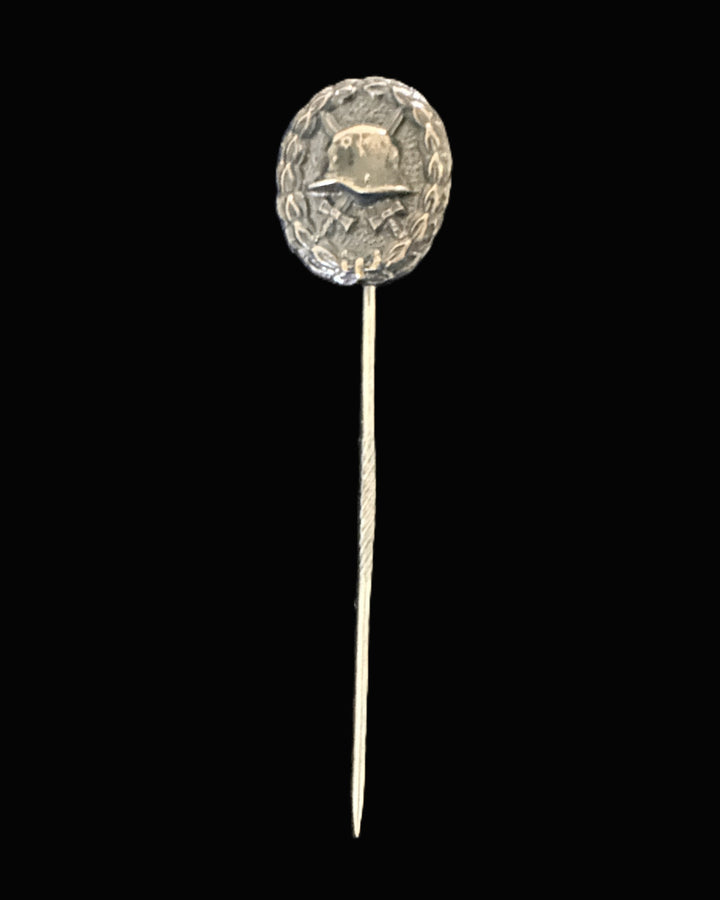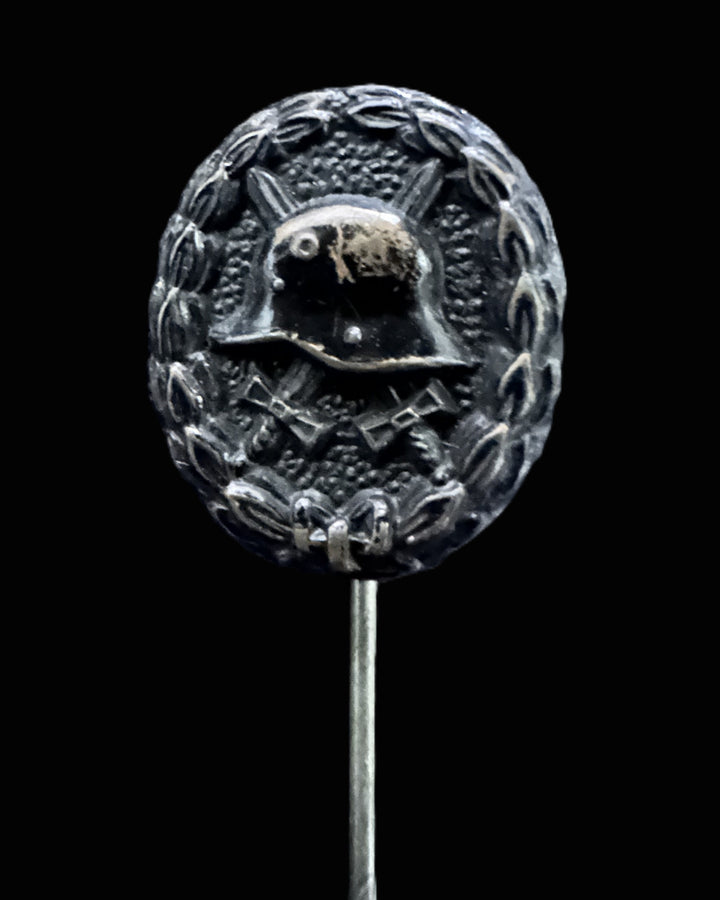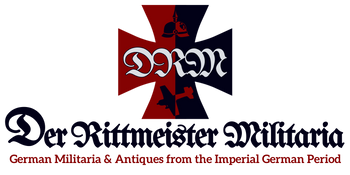Prussian Wound Badge Stickpin – Black Grade, World War I
- Regular price
- $65.00
- Sale price
- $65.00
- Regular price
SKU: 28-31
This miniature Prussian wound badge stickpin is a fine example of the subtle yet meaningful pieces produced during and after World War I to commemorate frontline service and sacrifice. Fashioned in die-struck metal and finished in blackened bronze, the oval badge measures approximately 15 mm in height and is attached to its original twisted knurled stickpin, the preferred format for wear on civilian lapels after 1918. The obverse displays the classic M1918 pattern design: the German Stahlhelm set above two crossed swords, encircled by a laurel wreath tied with a bow at the base—a symbol of valor and endurance under fire. Despite its small scale, the relief work retains sharp detail, with evident texture to the stippled background and well-defined oak leaves framing the central motif.
Instituted on March 3, 1918, by Kaiser Wilhelm II, the Wound Badge was one of the final decorations created by the Imperial German Army during the Great War. It recognized soldiers who had sustained injuries as a direct result of enemy action. Three grades were authorized: black for one or two wounds, silver for three or four, and gold for five or more wounds or severe disfigurement. The badge became one of the most personal decorations of the war, symbolizing not only injury but also the shared suffering and resilience of the German soldier. The black grade, as represented by this miniature, was by far the most commonly awarded and remained a potent emblem of service among veterans long after the Kaiserreich had fallen.
After the war, miniature versions like this one became popular among veterans who wished to continue displaying their service without wearing their full-size decorations. Such stickpins were often worn on the civilian jacket lapel during veterans’ reunions, memorial services, and patriotic gatherings organized by groups such as the Kyffhäuserbund and Stahlhelm Bund der Frontsoldaten. They were typically produced in Berlin or Munich, often by the same jewelers who had manufactured wartime awards. The detailed die-striking and quality of this example suggest a private-purchase issue rather than a mass-produced postwar souvenir.
The black finish, though showing some honest wear to the high points of the helmet and wreath, retains much of its original tone and contrast. The reverse is unmarked, as typical for these small-format versions, and the pin remains firmly attached and straight. The piece carries the quiet dignity of the trench veteran’s memento—an understated yet powerful symbol of endurance, loss, and comradeship forged in the final year of the Great War.
For collectors of Imperial German decorations, wound badge stickpins represent a meaningful subcategory that connects the official state awards of the Kaiserreich with the personal, emotional expressions of remembrance that characterized the interwar years. Their small size and variety of finishes make them particularly appealing to those assembling complete groupings of related awards or uniforms.
Comparable examples of black wound badge stickpins appear in specialized references such as Niemann’s Deutsche Auszeichnungen 1871–1945 and in veteran estate collections, where they often accompany full-size awards or group photographs. While less ostentatious than orders or campaign medals, they remain highly collectible for their authenticity and intimate connection to the soldier’s experience.
Condition overall is very good, with age-consistent patina and crisp relief details throughout. The blackened finish shows gentle wear consistent with handling but no corrosion or damage. The original stickpin is secure, and the piece displays beautifully as part of an Imperial wound badge collection or as an accessory to a World War I veteran’s grouping.





